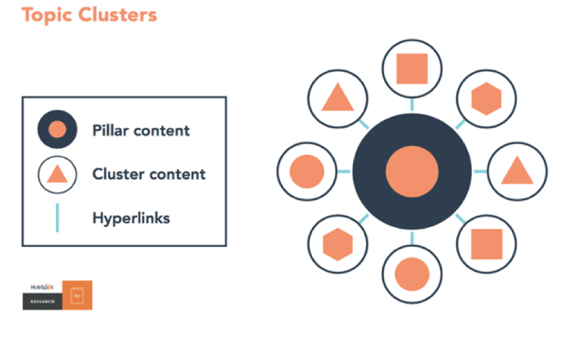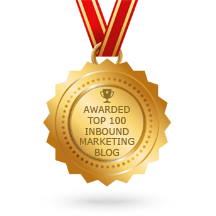Anyone who knows a thing or two about modern marketing knows that content is, and always has been, king.
The phrase has become somewhat of a marketing mantra, but what exactly does that mean? Essentially, high-quality and original content on a company’s website has a huge impact on SEO. Coupled with links from other high authority sites and some naturally placed keywords and your website is well on its way to increasing its rank organically for relevant search terms and keywords. And, a higher ranking in search engines ultimately exposes your company to more consumers searching for what you’re offering. Producing consistent content also helps cement you as an authority in your field, creating a greater sense of connection and trust with your target audience.
So what is the best way to push relevant and informative content on your website? Through a regular blog. Publishing a regular blog article (once a week) is the goal for most SMEs as it will help drive more traffic to your website and boost your rank in search engines. However, it is easy to become confused by knowing what to write, as well as how to write for both search engines and your buyers. The best piece of advice we can offer you is to always write for your buyers. A good idea is to start with understanding your buyer persona’s that is, understanding what information your buyers are looking for online, and what is important to them during the sales process. For more of the best blogging practices for SMEs – whether you’re a blogging novice or just need a refresh – read on.
Blog Topics
Coming up with relevant and engaging topics can be a struggle for many business owners. However, the easiest way to know what to write about is by developing your buyer personas so you have an idea of what information your buyers are looking for when they jump onto Google. Once you have a few topics in mind and know what to write about that will interest your buyers, it’s time to factor Google into the equation.
These days, competition to be found in search engine results is fierce. As a result, SEO practices have changed to a new model, known as the ‘topic cluster model’. How this basically works is that a single ‘pillar’ page acts as the main hub of content for an overarching topic. Then, multiple content pages are related to that same topic and linked back to the pillar page. This tells search engines like Google that your pillar page is an authority on that subject, and therefore should rank accordingly when people search for information on said topic.
Here is a handy graph from HubSpot that might make the idea of topic clusters a little bit clearer.

Here’s a real life example. Let’s say you run a content marketing business and want to rank in Google for the topic of ‘content marketing’. Your first step is to audit your existing websites pages and group them by topic focus. Then, you can create a pillar page that focuses on the term content marketing and talks about all the key aspects of content marketing in one page. Then, whenever you’re writing blogs about content marketing, you link back to your pillar page on content marketing.
It’s important to remember that your pillar pages (and you can have as many as you like) need to broadly cover the topic you’re focusing on so that when you link blog posts and other pages on your website back to it, it makes sense and all ties in nicely together. The ‘cluster’ content you create should talk in depth about one area mentioned on the pillar page. Blogs are an example of cluster content. So for example if you have a pillar page on content marketing, a blog article (or cluster content page) might talk about how to create a modern content marketing strategy, for example. You can read more on the theme of topic clusters here.
Blog Layout Best Practices
Now that we understand how to blog for both your buyers and for search engines we can get into how to structure your blog for maximum effect. Possibly the most important thing to remember when writing your blog articles is that people skim read when they read things on-screen. We live in a fast paced world where people want to find the information they need quickly, and if what they need is buried in the blog and hard to find, they will give up pretty quickly and move on to your competitor’s blog for the answers. So how do you optimise your blogs for your readers (and for Google?) Here are just a few simple ways:
Use headers and sub-headers
Using headers and sub-headers is essential when blogging. Not only does it allow your readers to jump to the parts that are relevant to them, but it also helps break up long blog posts. Furthermore, it allows readers to quickly skim read your blog and help convince them that it’s worth reading the whole thing.
Make use of lists
Just like headers help break up and organise a blog, so do numbered lists and bullet pointed lists. It helps people scan blogs quickly and find the information they’re looking for. When people can’t find the information they need in a timely manner, it is likely they will get frustrated and not bother reading at all.
Keep paragraphs shorts
Because the human eye and brain finds it harder to read online, it is a good idea to break your blog paragraphs down into manageable chunks. You’re aiming for around two to six sentences per paragraph when writing a blog post.
Use images (when relevant!)
We live in an age of visual culture where if content is king, images are queen. Statistics show that blogs with images in them receive 94% more total views than blogs without images. Safe to say, adding images will only benefit your blog! However, it is important to remember that the images need to be relevant and not just thrown in for the sake of it.
These are just a few handy tips to get you started with your blog. Just remember, blogging takes time and dedication and don’t be surprised if you don’t see results straight away. However, if you keep on top of your blogging and write consistent, relevant and informative articles that your target audience would appreciate, you’ll be well on your way to climbing the search engine ranks and getting more foot traffic to your website!


